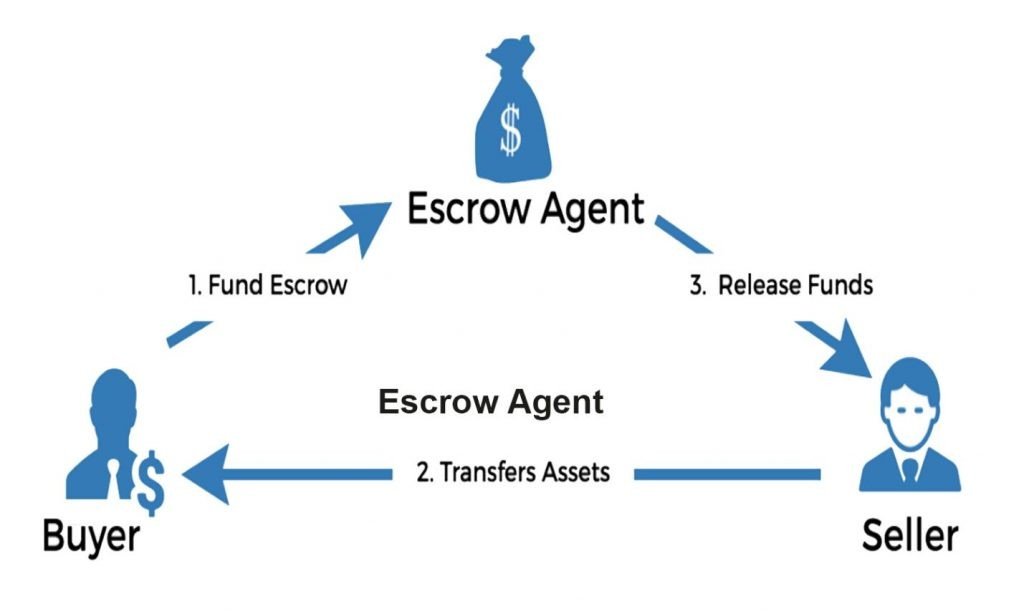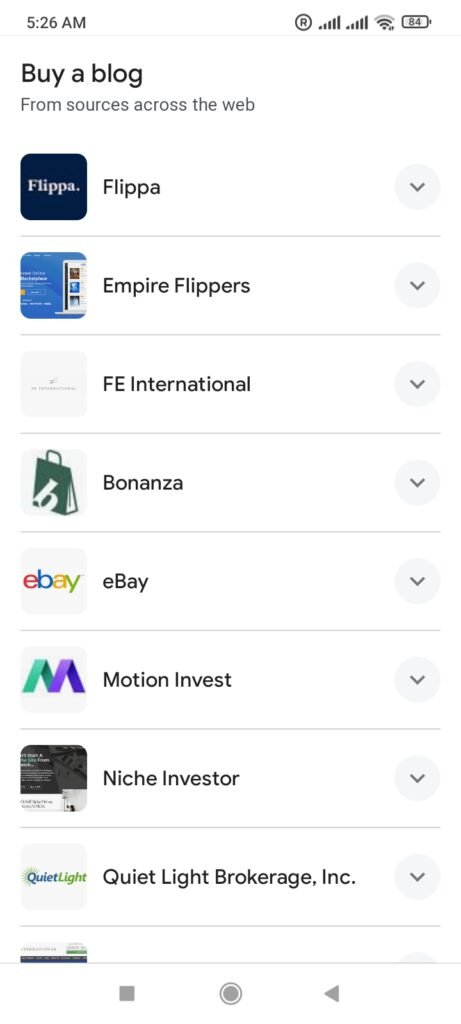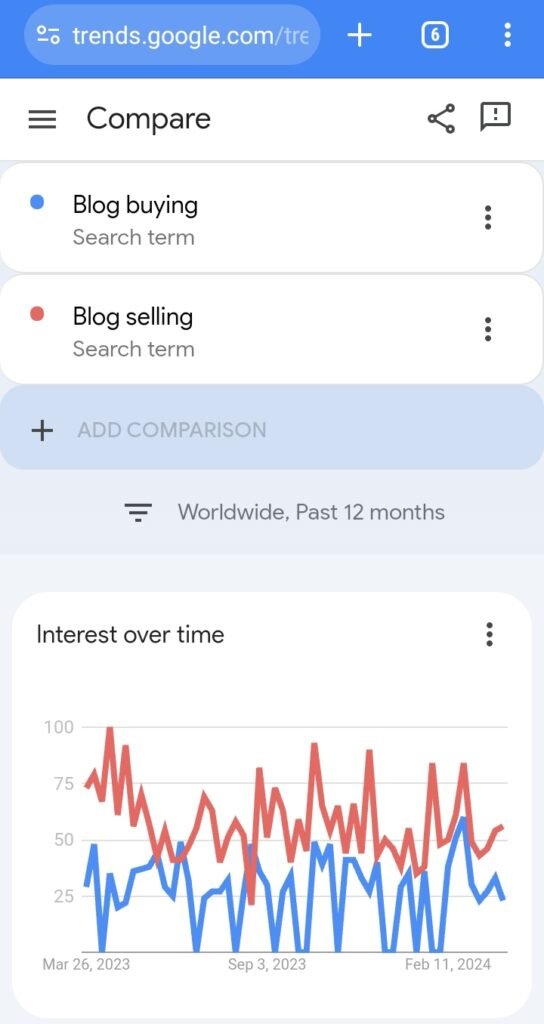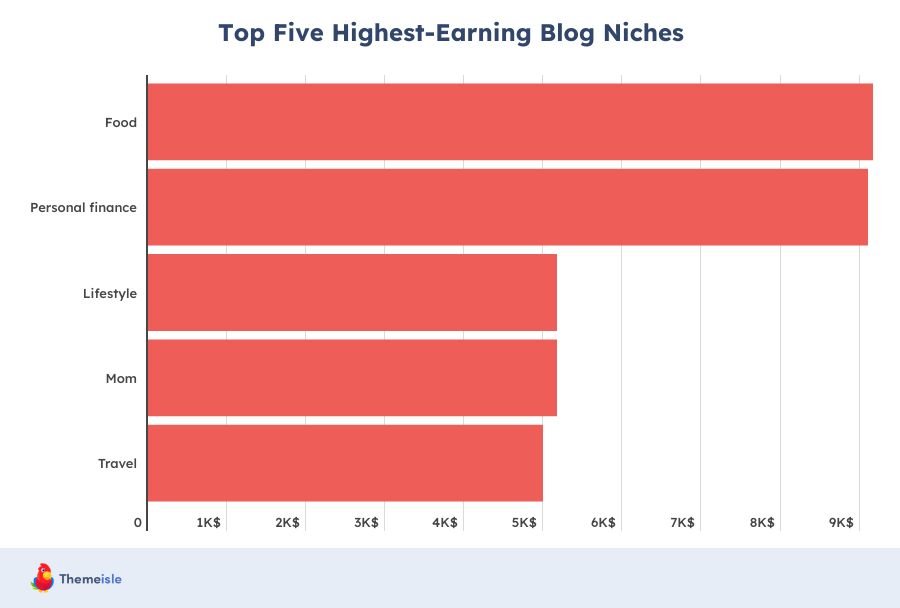Starting a blog trading business can be a lucrative venture if done right.
It involves buying and selling blogs to generate profit.
However, like any other business, it requires careful planning, research, and execution to ensure success.
In this article, we will discuss the steps to build a successful blog trading business and also mention popular sites that facilitate blog trading.
The first step in building a successful blog trading business is to identify your niche.
It’s important to choose a niche that you are passionate about and have expertise in.
This will not only make the process more enjoyable but also help you make informed decisions when buying and selling blogs.
Research the market trends and identify niches that are in high demand but have limited supply.
This will give you an edge in the market and increase your chances of making a profit.
Once you have identified your niche, the next step is to research and find potential blogs to buy.
There are several popular sites that facilitate blog trading, such as Flippa, Empire Flippers, and FE International.
These platforms provide a marketplace where blog owners can list their blogs for sale, and potential buyers can browse through the listings to find suitable opportunities.
Take the time to thoroughly evaluate each blog’s performance, traffic, revenue, and potential for growth.
It’s important to look beyond the surface-level metrics and dig deeper to understand the blog’s audience, content quality, and monetization strategies.
After identifying potential blogs to buy, it’s crucial to conduct due diligence before making any offers.
This involves analyzing the blog’s financial statements, traffic sources, and backlink profile.
You should also reach out to the blog owner and ask for additional information or clarification on any areas of concern.
Additionally, consider seeking professional advice from an accountant or lawyer to ensure that the transaction is transparent and legally sound.
Once you have successfully acquired a blog, the next step is to optimize and grow its value.
This involves improving the blog’s design, content quality, user experience, and search engine optimization (SEO) to attract more traffic and increase its revenue potential.
Implement a robust content strategy to consistently publish high-quality, engaging content that resonates with the target audience.
Leverage social media and other marketing channels to promote the blog and attract a larger audience.
Additionally, explore monetization opportunities such as
- affiliate marketing,
- sponsored posts,
- display advertising
- Etc
to diversify the blog’s revenue streams.
As your blog grows in value, you can consider selling it to generate a profit.

Keep track of market trends and identify the right time to sell for maximum returns.
Just like buying, selling a blog requires careful evaluation and due diligence.
Prepare a comprehensive listing that highlights the blog’s performance, revenue, growth potential, and any other unique selling points.
Engage with potential buyers and be transparent about the blog’s strengths and weaknesses.

Negotiate the terms of the sale and ensure that the transaction is conducted securely and legally.
In conclusion, building a successful blog trading business requires careful planning, research, and execution.
Identify a niche that aligns with your passion and expertise, research potential blogs to buy, conduct due diligence, optimize and grow the blog’s value, and consider selling it for profit when the time is right.
Remember to leverage popular blog trading platforms and seek professional advice when needed.
With the right strategies and a bit of luck, you can turn your blog trading venture into a profitable and fulfilling business.
1. Conduct Market Research
Before diving into the world of blog trading, it is essential to conduct thorough market research.
This step will help you understand the current trends, demand, and competition in the blog trading industry.
It is crucial to identify profitable niches and target audiences to ensure a successful trading business.
Use tools like Google Trends, keyword research tools, and industry reports to gather data and insights.
Analyze the popularity of different blog niches, the average selling price of blogs, and the demand for specific types of content.
This research will provide a solid foundation for your blog trading business.
One important aspect of market research is identifying the target audience for your blog trading business.
Understanding who your potential buyers are will help you tailor your blog acquisition strategy to meet their needs and preferences.
For example, if your target audience consists of small business owners looking to start a blog for their company, you may want to focus on acquiring blogs in niche industries relevant to their business.
Additionally, market research will help you identify the competition in the blog trading industry. By analyzing the blogs that are currently available for sale and the prices they are being sold for, you can gain insights into the market dynamics and determine the optimal pricing strategy for your own blog acquisitions.
You may also discover untapped niches or gaps in the market that present opportunities for you to specialize and differentiate your blog trading business.
Furthermore, conducting market research will enable you to stay up-to-date with the latest trends and developments in the blog trading industry.
You can compare different niches and some factors with the google trends.
This knowledge will allow you to make informed decisions and adapt your strategies as the market evolves.
By keeping a pulse on the industry, you can identify emerging niches or changes in buyer preferences that can give you a competitive edge.
In conclusion, conducting market research is a crucial step in establishing a successful blog trading business.
It provides valuable insights into the current market trends, demand, competition, and target audience.
By leveraging this information, you can make informed decisions, tailor your blog acquisition strategy, and position your business for long-term success in the dynamic world of blog trading.
2. Build a Network
Building a strong network is vital for success in the blog trading business.
Connect with bloggers, website owners, and other industry professionals who can provide valuable insights and potential trading opportunities.
Attend industry events, join online forums and communities, and actively engage with others in the blogging community.
Networking can help you find potential sellers and buyers, negotiate deals, and gain credibility in the industry.
Collaborate with other bloggers and website owners to establish mutually beneficial relationships that can lead to successful blog trading transactions.
One effective way to build a network is by attending industry events. These events provide an opportunity to meet and connect with like-minded individuals who share a passion for blogging and website ownership.
It is during these events that you can engage in meaningful conversations, exchange ideas, and potentially find bloggers who are interested in trading their blogs.

Another way to expand your network is by joining online forums and communities dedicated to blogging and website ownership.
These platforms provide a space for individuals to ask questions, share experiences, and connect with others in the industry.
By actively participating in these forums, you can establish yourself as a knowledgeable and reliable trader, attracting potential sellers and buyers to your network.
Furthermore, social media platforms such as LinkedIn, Twitter, and Facebook can also be powerful tools for building your network.
Create a professional profile that showcases your experience and expertise in blog trading, and actively engage with others in the industry by sharing valuable content, commenting on posts, and joining relevant groups.
These platforms allow you to connect with a wide range of individuals, including bloggers, website owners, and industry professionals, who may be interested in trading their blogs.
As you build your network, it is important to prioritize quality over quantity.
While having a large network can be beneficial, it is more important to establish meaningful connections with individuals who are actively involved in the blogging industry and have a genuine interest in blog trading.
Focus on building relationships based on trust, mutual respect, and shared goals, as these are the foundations for successful blog trading transactions.
3. Create a Website or Platform
To facilitate blog trading, it is essential to have a professional website or platform where buyers and sellers can connect.

This platform should have user-friendly features that make it easy for users to browse, list, and search for blogs.
Consider including features such as detailed blog descriptions, traffic and revenue statistics, and a secure payment system.
Invest in a visually appealing and responsive website design that instills trust and credibility in potential buyers and sellers.
Ensure that the platform is easy to navigate and provides a seamless experience for users. Regularly update and maintain the website to provide the best possible user experience.
When creating a website or platform, it is important to carefully consider the target audience and their specific needs. Conduct thorough market research to identify the key features and functionalities that will attract both buyers and sellers.
For example, if your target audience consists of experienced bloggers, you may want to include advanced filtering options that allow them to search for blogs based on specific niches or traffic sources.
Additionally, it is crucial to prioritize security measures to protect both buyers and sellers.
Implement robust authentication and verification systems to ensure the legitimacy of users.
Consider integrating a secure payment gateway that encrypts sensitive information and offers fraud protection.
Furthermore, a well-designed and user-friendly interface can greatly enhance the overall user experience.
Implement intuitive navigation menus and clear call-to-action buttons that guide users through the platform.
Consider incorporating features such as saved searches, notifications, and personalized recommendations to keep users engaged and encourage repeat visits.
Regularly updating and maintaining the website is essential to keep up with the ever-evolving needs and expectations of users.
Continuously monitor user feedback and analyze user behavior to identify areas for improvement.
Implement regular software updates and security patches to ensure the platform remains secure and stable.
Lastly, building a strong online presence through effective marketing strategies is crucial to attract a large user base.
Utilize various digital marketing techniques such as search engine optimization (SEO), social media marketing, and content marketing to increase visibility and drive traffic to your platform.
Collaborate with influential bloggers or industry experts to promote your platform and establish credibility within the blogging community.
Popular Sites for Blog Trading
Several popular sites facilitate blog trading and provide a platform for buyers and sellers to connect.
These sites have established themselves as trustworthy and reliable platforms for blog trading.
Some of the popular sites include:
- Flippa: Flippa is one of the leading platforms for buying and selling websites and blogs. It offers a wide range of listings, including established blogs, starter sites, and domain names. Flippa has a user-friendly interface that allows buyers to browse through various categories and filter their search based on specific criteria such as niche, traffic, revenue, and price. Sellers can list their blogs for sale and reach a large pool of potential buyers. The platform also provides features like escrow services, due diligence tools, and a marketplace for domain names.

- Empire Flippers: Empire Flippers is a marketplace for buying and selling online businesses, including blogs. They have a thorough vetting process to ensure the quality and legitimacy of the listed blogs. Empire Flippers offers a range of services to both buyers and sellers, including valuation, due diligence, and migration assistance. They also provide detailed information about each listing, including traffic and revenue statistics, monetization methods, and growth potential. The platform has a strong community of buyers and sellers, making it a reliable place for blog trading.
- FE International: FE International specializes in the sale of established and profitable websites and blogs. They have a team of experienced brokers who assist in the buying and selling process. FE International offers a personalized approach to each transaction, providing sellers with a comprehensive valuation and marketing strategy. They also help buyers in conducting due diligence and negotiating the deal. The platform has a wide network of potential buyers and sellers, ensuring a smooth and secure blog trading experience.
- Website Broker: Website Broker is a platform that connects buyers and sellers of websites and blogs. They offer a range of services, including website valuations and assistance with the buying and selling process. Website Broker has a user-friendly interface that allows users to easily list their blogs for sale and connect with potential buyers. The platform also provides resources and guides to help users navigate the blog trading process, including tips on valuation, negotiation, and transfer of ownership.
- BuySellWebsite: BuySellWebsite is a marketplace for buying and selling websites and blogs. They provide a platform for users to list their blogs and connect with potential buyers. BuySellWebsite offers features like listing upgrades, which can help sellers attract more attention to their blogs. The platform also provides a secure payment system, ensuring a safe and smooth transaction for both buyers and sellers. Additionally, BuySellWebsite has a community forum where users can discuss blog trading strategies, seek advice, and share success stories.
These platforms provide a secure and reliable environment for blog trading.
However, it is important to conduct due diligence and research before making any transactions. Buyers should thoroughly analyze the traffic, revenue, and growth potential of the blogs they are interested in, while sellers should accurately represent their blogs and provide transparent information to potential buyers.
By using these popular sites for blog trading, individuals can confidently engage in the buying and selling of blogs, expanding their online presence and generating income.
4. Develop a Pricing Strategy
Pricing plays a crucial role in the success of a blog trading business. It is important to develop a pricing strategy that ensures profitability while attracting potential buyers.
Consider factors such as the blog’s niche, traffic, revenue, content quality, and potential for growth.
Research the market to understand the average selling price for blogs in different niches.
Set competitive prices that reflect the blog’s value and potential.
Be prepared to negotiate and consider offers from potential buyers, but also be cautious not to undervalue your blogs.
When developing your pricing strategy, it is essential to analyze your blog’s niche. Different niches have varying levels of demand and competition, which can influence the value of your blog.
For example, a blog in a highly specialized niche with a loyal audience and high traffic may command a higher price compared to a blog in a saturated niche with low traffic.
Another factor to consider is the traffic your blog receives. Higher traffic indicates a larger potential audience for potential buyers to market to, which can increase the value of your blog.
Look at your blog’s analytics to determine the average monthly visitors, page views, and engagement metrics.
This data can help you justify a higher price if your blog has a substantial and engaged audience.
Revenue is another crucial aspect to consider when pricing your blog. Evaluate your blog’s monetization methods, such as advertising, sponsored posts, affiliate marketing, or product sales.
Calculate your monthly or annual revenue from these sources, and factor it into your pricing strategy.
Blogs with consistent revenue streams are often more attractive to buyers, as it indicates the potential for a return on investment.
Content quality is also an important consideration. Assess the uniqueness, relevance, and depth of your blog’s content.
High-quality content that offers valuable insights, solves problems, or entertains readers can increase the value of your blog.
Buyers are often willing to pay a premium for blogs with exceptional content that sets them apart from competitors.
Finally, consider the potential for growth when determining your pricing strategy.
Are there untapped opportunities to expand your blog’s reach, monetization methods, or partnerships?
Highlight these growth prospects to potential buyers, as it can justify a higher price.
Additionally, if you have a proven track record of growing your blog or have plans in place to scale it further, it can increase the perceived value of your blog.
In conclusion, developing a pricing strategy for your blog trading business requires careful consideration of various factors.
By analyzing your blog’s niche, traffic, revenue, content quality, and growth potential, you can set competitive prices that reflect the true value of your blogs. Remember to research the market, be prepared to negotiate, and avoid undervaluing your blogs. With a well-thought-out pricing strategy, you can maximize profitability and attract potential buyers to your blog trading business.
5. Market and Promote Your Blog Trading Business
To attract potential buyers and sellers, it is crucial to market and promote your blog trading business effectively.
Utilize various marketing channels such as
- social media
- content marketing
- email marketing
- search engine optimization
to reach your target audience.
Create compelling content that showcases the benefits of blog trading and highlights the success stories of your previous transactions.
Engage with your audience through blog posts, social media updates, and newsletters. Collaborate with influencers and industry experts to expand your reach and credibility.
When it comes to social media, establish a strong presence on platforms such as Facebook, Twitter, Instagram, and LinkedIn.
Regularly share informative and engaging posts related to blog trading, offering valuable insights and tips to your audience.
Encourage discussions and interactions by asking questions and responding to comments promptly.
In addition to social media, leverage the power of content marketing.
Create high-quality blog articles, videos, and infographics that educate and inform your target audience about the advantages of blog trading.
Optimize your content with relevant keywords to improve its visibility in search engine results.
Email marketing is another effective strategy to reach out to potential clients. Build an email list by offering valuable resources, such as e-books or exclusive industry reports, in exchange for email addresses.
Send regular newsletters to your subscribers, sharing updates about your blog trading business, new listings, and market trends.
Furthermore, invest time and effort in search engine optimization (SEO) to improve your website’s visibility in search engine results.
Conduct keyword research to identify relevant keywords and incorporate them naturally into your website’s content.
Optimize your meta tags, headings, and URLs to make it easier for search engines to understand and rank your website.
Collaborating with influencers and industry experts can significantly enhance your blog trading business’s visibility and credibility.
Identify influencers and experts in the field of blog trading and reach out to them for potential collaborations.
This could include guest blogging on their platforms, participating in interviews or webinars, or co-creating content.
Remember to track and analyze the performance of your marketing efforts. Monitor website traffic, engagement metrics, and conversion rates to identify what strategies are working and what needs improvement.
Adapt your marketing approach accordingly to maximize the effectiveness of your promotional activities.
By implementing a comprehensive marketing and promotion strategy, you can attract a steady stream of potential buyers and sellers to your blog trading business, ultimately leading to increased success and profitability.
6. Provide Excellent Customer Service
Customer service plays a significant role in building a successful blog trading business.
Provide prompt and professional support to potential buyers and sellers. Respond to inquiries and provide detailed information about the blogs listed on your platform.
Ensure a smooth and secure transaction process for both buyers and sellers.

Address any concerns or issues promptly and professionally.
Building a reputation for excellent customer service will help attract more users to your platform and increase the likelihood of successful blog trading transactions.
One way to provide excellent customer service is by implementing a live chat feature on your website.
This allows potential buyers and sellers to get immediate assistance and have their questions answered in real-time.
It also shows that you value their time and are committed to providing the best possible experience for them.
In addition to live chat, it’s important to have a dedicated customer support team that is easily accessible.
This can be done through email, phone, or even social media platforms. Having multiple channels of communication ensures that customers can reach out to you in the way that is most convenient for them.
When responding to inquiries, it’s crucial to provide detailed and accurate information about the blogs listed on your platform.
This includes information such as the niche, traffic statistics, monetization methods, and any other relevant details.
By being transparent and informative, you build trust with potential buyers and increase the chances of a successful transaction.
Another aspect of excellent customer service is ensuring a smooth and secure transaction process.
This can be achieved by implementing secure payment gateways and encryption protocols to protect sensitive information.
Additionally, providing clear instructions and guidance throughout the transaction process helps buyers and sellers feel confident and reassured.
Addressing concerns or issues promptly and professionally is also crucial for maintaining excellent customer service.
If a buyer or seller encounters any problems or has any questions, it’s important to respond quickly and provide a satisfactory resolution.
This not only helps retain existing customers but also enhances your reputation and attracts new users to your platform.
Overall, providing excellent customer service is a key factor in the success of a blog trading business.
By being responsive, informative, and reliable, you build trust and loyalty among your users.
This, in turn, leads to increased transactions and a thriving community of buyers and sellers on your platform.







